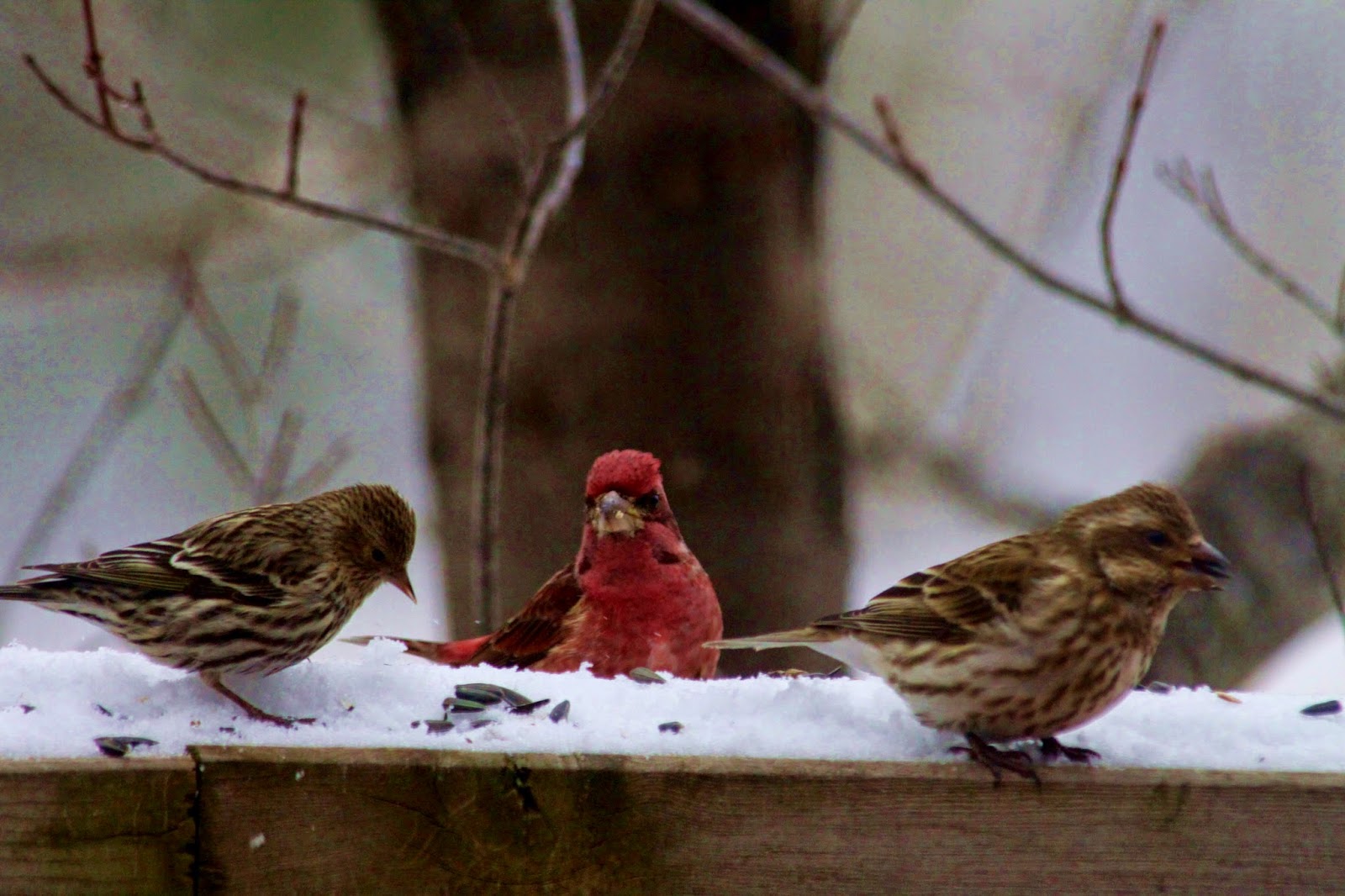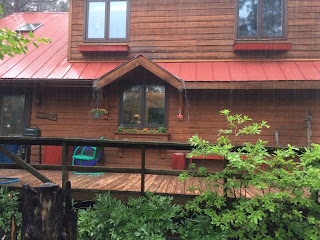Winter Finches
WINGIN’ IT
By Kate Crowley
On Tuesday the snowstorm blew in, carrying with it a flurry of finches. We were happy for both. I was tired of looking at brown ground and the action around our feeders had become lackluster; the same old, same old. But a combination of snow and wind was the alchemy needed for the transformation at our feeders. The action was fast and constant and we walked from window to window trying to count the different species. We had decided this would be a good day to do a bird count for Feederwatch.
The mix included black-capped chickadees, blue jays, red-breasted nuthatches, dark-eyed juncos, purple finches, pine siskins, and common redpolls, the last two being iconic irruptive species. What this means is that every couple years or so, siskins and redpolls move south in large numbers from their normal winter range. Scientists believe the reason for this migration is a shortage of cones (and their seeds) from spruce and pines, as well as the catkins (dangling seed clusters) of birch and alder.
Both the redpolls and siskins are small birds – about the size of a chickadee but somewhat more slender looking. The siskins are mostly streaked brown with yellow flight feathers on their pointed wings and under their notched tail feathers. In the winter they travel in large flocks and their incessant, but pleasant twittering is heard whether they are perched or in flight. Our only chance to see the siskins is in the winter months because they nest in the Canadian forests.
The redpolls have streaked brown and white bodies and also sport a jaunty red cap and any bright color, no matter how small is greatly appreciated in the winter months. Black feathers surround their beak. The males add even more color with a blush of reddish pink on their breasts and sides. On that snowy Tuesday, with the flat light we strained to see those field marks as the birds sat in the branches of the trees, but once they came to the feeders, even among the snowflakes, we could see the telltale rouge. Redpolls are known to travel in flocks numbering in the hundreds. Our visitors were a much smaller group, but just as welcome.
There is another type of redpoll, called the hoary, because its overall coloration is paler. Occasionally they drift down from their high arctic territories, but it is rare for them to come this far south. One almost needs to see representatives of the two species next to one another to be sure of their identity.
Both redpolls and siskins are finches as I’ve already noted, and typically these groups of birds have relatively heavy beaks in order to crack the shells of seeds they eat. Pine siskins have a slightly thinner, more pointed beak, which makes nyger (thistle) seeds more to their liking, but they seem to relish sunflower seeds as much as the other finches. The redpolls will also visit the thistle feeder.
Current reports from around the country indicate that some of the redpolls have traveled as far south as Illinois and Indiana and North Carolina on the east coast. The majority are being seen in a band across the country from northern Minnesota over to New Brunswick, Canada. Pine siskins on the other hand are being seen all over the United States and as far south as Louisiana and Florida. Like many northerners they seem to have chosen to spend their winter in warmer climes. Lacking feeders, they will forage on scrubby thickets or weedy fields which are plentiful all over the country.
When the snowstorm abated, the flocks dispersed too, although we are still seeing a lot of siskins and some redpolls at the feeders. The purple finches are in the mix and the brightly colored males (definitely more red than purple) are an extra bonus. Mike finally realized we could be getting even better looks at these birds if we put seeds on the deck railing. And he was right. Now we can look out the windows and just six feet away busy birds are pecking for treats in the leftover snow. These finches may not be as flashy and exciting as the warblers when they come through in the springtime, but they are providing us with hours of entertainment and pleasure.






Comments
Post a Comment